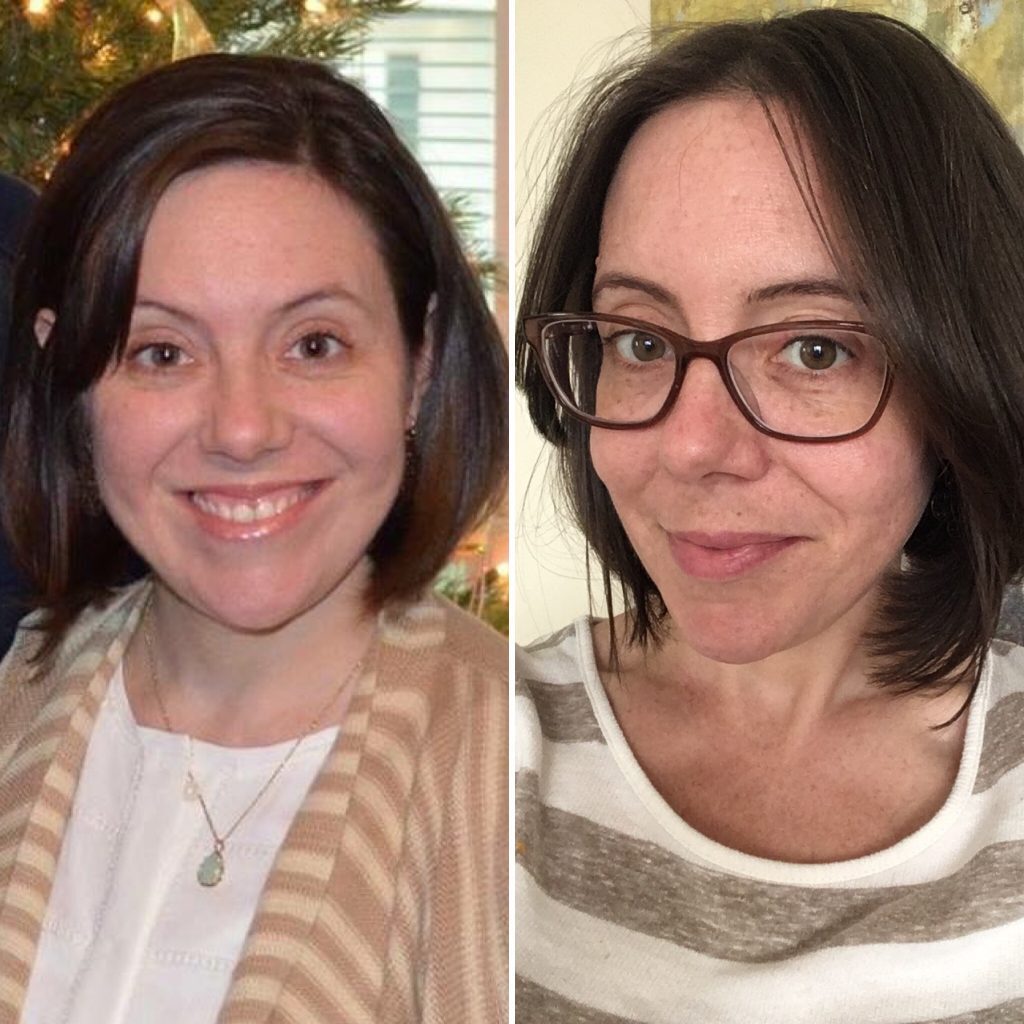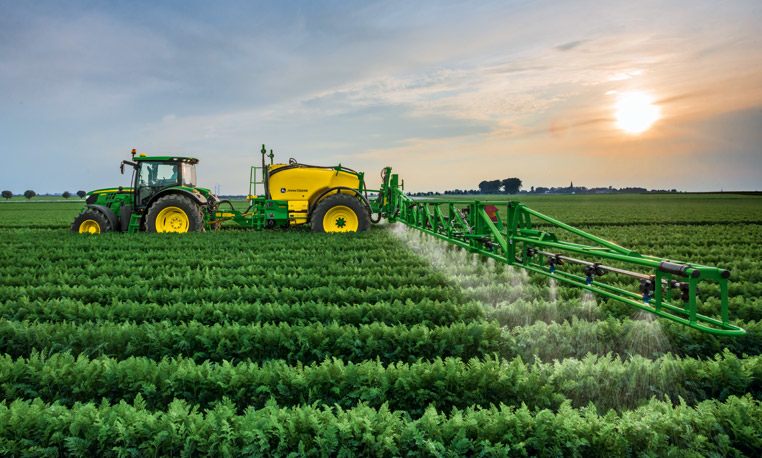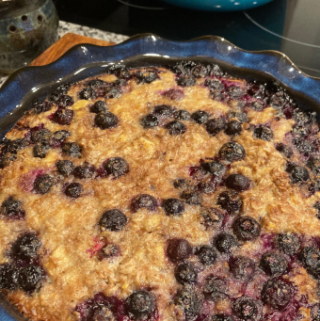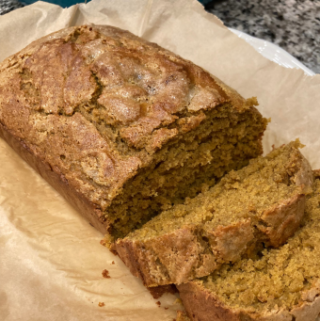Have you ever wondered about the benefits of eating whole foods? Most of Americans eat a Standard American Diet (SAD) full of heavy carbs, sugar, and saturated fat. They (might) know they should “do better,” but what does that look like? There is so much nutrition advice out in the world and on the internet. I hope to help you make sense of it all.
This post is the beginning of a series where I plan to highlight the benefits of a whole foods diet, while also detailing several options (AIP, SCD, Whole30, etc.) and what makes them different from one another. I hope you’ll come along for the journey.
MY SWITCH TO WHOLE FOODS

Left: Standard American Diet
Right: Eight weeks into a diet of whole foods
In 2015, I switched from a Standard American Diet (SAD) to a diet of nutrient-dense, whole foods. At the time, I used the Autoimmune Protocol (AIP) as my guide. I made the switch at a running leap, but I was desperate for change. At that point, I was so sick I couldn’t stand long enough to cook a meal. I used to lay on the floor in front of my stove and stand up just long enough to stir the food.
It takes a lot of motivation to make a drastic change to one’s diet. Not everyone feels the same physical need that drove me forward. For some, the most attainable change might begin with just a few “better than” choices. But even then, there is so much diet advice out in the world and on the internet. How do you make sense of it? Where do you begin?
FOCUS ON THE COMMON THREAD
There is a common thread in many of the nutrient-dense diets. That common thread is the avoidance of highly processed food, while instead, focusing on real, whole foods. But what is a “whole food”? A whole food can be defined as a food from nature that has not been interrupted or changed by mass production. Eating a diet of whole foods is not just a trend. It’s actually a return to the way our ancestors ate in years’ past.

A whole food is one that has not been adulterated by mass production.
AMERICA’S NOSEDIVE INTO “FAKE FOOD”
The processed food revolution is really rather new in the span of American history. While some processed foods made their appearance in the early 1900’s, the movement didn’t soar in popularity until the economic stability of post WWII America. The 1950’s and 1960’s led to the rapid adoption of processed foods into the American food chain as modern women sought out careers, clubs, and other occupations outside the kitchen. Crisco, Velveeta, Jell-o, and Kool-aid were among the earliest convenience foods. (Note that processed foods bring new words into the English language. Fake food. Fake word.)

A fake word is often used to brand fake food.
Unfortunately, choosing whole foods is more complicated than just shopping for fruits and vegetables. In today’s modern world, an effort to eat whole foods should go beyond avoidance. The whole foods movement is also about sourcing the cleanest options available.
WHEN “HEALTHY” FOOD ISN’T WHAT IT SEEMS
Pesticides such as Glyphosate infect the chain of conventional produce in America. Glyphosate (more commonly known as Round-Up) is so powerful that it kills nearly every plant in its path. That is why Monsanto, the herbicide’s creator, came up with genetically modified seeds (GMOs) to resist the Glyphosate that is dumped on the crops. But while these seeds are resistant, the weeds have become more persistent, so that more and more chemicals must be dumped on the crops each season. While there is some notion that pesticides can be washed away from the skins of our fruits and vegetables, the reality is that during growth, the pesticides are taken in by the plant, creating a systemic effect that permeates the whole of the food.
In 2015, the World Health Organization classified Glyphosate as a “probable carcinogen.” In a recent study, Glyphosate has been shown to alter the gut microbiome, leading to lower glucose tolerance, increased obesity, and diabetes. It has been banned in many countries throughout the world, but is still widely used in America.

So if Glyphosate is bad, and there are a whole host of other chemicals present in most all of our conventionally grown produce, how do we protect ourselves from the prevalence of this dangerous chemical? The answer is organic food, or even better, locally sourced food from small family farms.
SOURCING WHOLE FOODS
Unfortunately, due to cost, my family is not 100% organic. I do, however, follow several principles when shopping. First, I always check the cost of organic versus conventional produce. Many times, I have found it to be the same, and if there is a sale, I’ve even found organic produce cheaper than conventional.
Second, when making choices at the store, I am always aware of the most current “Dirty Dozen” and “Clean Fifteen” lists. Following these lists, our spinach, strawberries, and apples are always organic, while I feel a little better about buying our avocados, onions, and cantaloupe from conventional growers.
During the summer months, I shop from our local farmer’s market as often as possible. Get to know your local farmers. While some are not certified organic (as that certification is expensive) you may find farmers who are low spray or use alternatives to the most potent pesticides.
WHAT ABOUT EGGS, FISH, MEAT, AND POULTRY?
My family’s meat supply is another thing I changed as I sought out healthy, whole foods. Conventional farming requires growth hormones, steroids, and antibiotics as the animals are grown quickly in overcrowded environments that promote disease. Over time, I slowly stepped our meat supply up the chain of grocery store quality (conventional, cage free, free range, grass fed, wild-caught) before switching to a local supplier for chicken, beef, and pork.

ALLOW YOURSELF GRACE AS YOU CHANGE
When I first came to a whole foods diet, my initial step was to swap the bagged and boxed processed foods for fresh fruit and vegetables. All of the other changes came later. They came in layers. Allow yourself some grace as you make a switch. Give yourself time to learn about food choices, read labels, and make conscious changes to your food budget. Not everyone can afford the best, but there are always choices that represent a “better than” option. Seek out whole foods, and know that in each “better than” choice, you are providing your body with the nutrient density that it needs to flourish and heal.






Leave a Reply
You must be logged in to post a comment.